Episodes
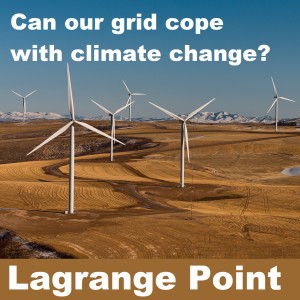
Monday Mar 11, 2019
Monday Mar 11, 2019
One of the futuristic technologies always touted is Hydrogen fuel cells. So why are they not everywhere? we look at the challenges in production,storage, and use of hydrogen from cars to factories. Plus we examine if our electricity grid will be able to cope with the drastic weather condition changes from climate change in the year 2100.
References:
- Yinjun Xie, Peng Hu, Yehoshoa Ben-David, David Milstein. A Reversible Liquid Organic Hydrogen Carrier System Based on Methanol-Ethylenediamine and Ethylene Urea. Angewandte Chemie International Edition, 2019; DOI: 10.1002/anie.201901695
- Gunther Glenk, Stefan Reichelstein. Economics of converting renewable power to hydrogen. Nature Energy, 2019; DOI: 10.1038/s41560-019-0326-1
- Smail Kozarcanin, Hailiang Liu, Gorm Bruun Andresen. 21st Century Climate Change Impacts on Key Properties of a Large-Scale Renewable-Based Electricity System. Joule, 2019; DOI: 10.1016/j.joule.2019.02.001
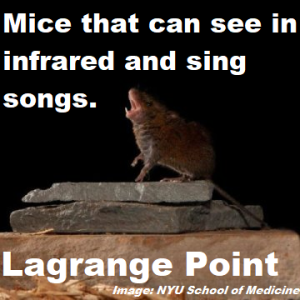
Monday Mar 04, 2019
Monday Mar 04, 2019
We preview 2019 March Mammal Madness, and find out about interesting animals from across the world. We look at ways to augment vision to help see in infra-red, and use singing mice to study human conversation. Plus we find out about balancing predators and prey.
References:
- March Mammal Madness
- Yuqian Ma, Jin Bao, Yuanwei Zhang, Zhanjun Li, Xiangyu Zhou, Changlin Wan, Ling Huang, Yang Zhao, Gang Han, Tian Xue. Mammalian Near-Infrared Image Vision through Injectable and Self-Powered Retinal Nanoantennae. Cell, 2019; DOI: 10.1016/j.cell.2019.01.038
- Matthew T. Farr, David S. Green, Kay E. Holekamp, Gary J. Roloff, Elise F. Zipkin. Multispecies hierarchical modeling reveals variable responses of African carnivores to management alternatives. Ecological Applications, 2019; 29 (2): e01845 DOI: 10.1002/eap.1845
- Daniel E. Okobi Jr., Arkarup Banerjee, Andrew M. M. Matheson, Steven M. Phelps, Michael A. Long. Motor cortical control of vocal interaction in neotropical singing mice. Science, 2019 DOI: 10.1126/science.aau9480
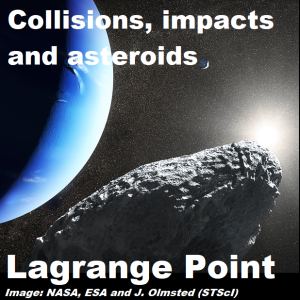
Monday Feb 25, 2019
Episode 315 - Asteroids, meteorites and the destruction of moons
Monday Feb 25, 2019
Monday Feb 25, 2019
It's easy to think of the solar system as a static object that's always been there. But by studying asteroids, meteorites and moons we can piece together the often violent and dramatic history of our solar system. From Earth being bombarded by water bearing asteroids, to moons being broken apart and reformed around Neptune. We even follow up on some of the great work done by JAXA and the Hyabusa 2 mission. This week we look at some of the latest research into our solar system by studying the smallest often overlooked pieces.
References:
- Josep M. Trigo-Rodríguez, Albert Rimola, Safoura Tanbakouei, Victoria Cabedo Soto, Martin Lee. Accretion of Water in Carbonaceous Chondrites: Current Evidence and Implications for the Delivery of Water to Early Earth. Space Science Reviews, 2019; 215 (1) DOI: 10.1007/s11214-019-0583-0
- Rincon, P. (2019, February 21). Hayabusa-2: Japan mission set to 'bite an asteroid'. Retrieved from https://www.bbc.com/news/science-environment-47293317
- M. R. Showalter, I. de Pater, J. J. Lissauer, R. S. French. The seventh inner moon of Neptune. Nature, 2019; 566 (7744): 350 DOI: 10.1038/s41586-019-0909-9
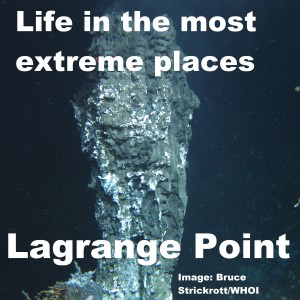
Monday Feb 18, 2019
Episode 314 - Ancient life and life in extreme places
Monday Feb 18, 2019
Monday Feb 18, 2019
From the bottom of the ocean, to the earliest days of the earth, life has managed to not just survive but thrive. We look at several cases which change our understanding of the earliest life on earth and just what that might mean for understanding life on this planet and beyond. From moving life fossilised in mud, to using isotopes to study metabolism and discovering whole new methods of getting food, life continues to astound researchers with its inventiveness.
References:
- Min Sub Sim, Hideaki Ogata, Wolfgang Lubitz, Jess F. Adkins, Alex L. Sessions, Victoria J. Orphan, Shawn E. McGlynn. Role of APS reductase in biogeochemical sulfur isotope fractionation. Nature Communications, 2019; 10 (1) DOI: 10.1038/s41467-018-07878-4
- Abderrazak El Albani, M. Gabriela Mangano, Luis A. Buatois, Stefan Bengtson, Armelle Riboulleau, Andrey Bekker, Kurt Konhauser, Timothy Lyons, Claire Rollion-Bard, Olabode Bankole, Stellina Gwenaelle Lekele Baghekema, Alain Meunier, Alain Trentesaux, Arnaud Mazurier, Jeremie Aubineau, Claude Laforest, Claude Fontaine, Philippe Recourt, Ernest Chi Fru, Roberto Macchiarelli, Jean Yves Reynaud, François Gauthier-Lafaye, Donald E. Canfield. Organism motility in an oxygenated shallow-marine environment 2.1 billion years ago. Proceedings of the National Academy of Sciences, 2019; 201815721 DOI: 10.1073/pnas.1815721116
- Stephanie A. Carr, Sean P. Jungbluth, Emiley A. Eloe-Fadrosh, Ramunas Stepanauskas, Tanja Woyke, Michael S. Rappé, Beth N. Orcutt. Carboxydotrophy potential of uncultivated Hydrothermarchaeota from the subseafloor crustal biosphere. The ISME Journal, 2019; DOI: 10.1038/s41396-019-0352-9

Monday Feb 11, 2019
Episode 313 - Cross continent pop hits from whales and deep divers
Monday Feb 11, 2019
Monday Feb 11, 2019
The greatest pop hits can cross continents, but what about oceans? We all know whales make songs, but not only are they very complex, they can be covered, repeated and spread like a Number 1 summer hit across oceans to the far flung corners of the globe. Plus reaching the deepest depths of the ocean is tough for humans, but easy for whales. How do they accomplish these great feats? We also touch on the impact of naval sonar on the battle between squids and whales.
Reference:
- Jeanne M. Shearer, Nicola J. Quick, William R. Cioffi, Robin W. Baird, Daniel L. Webster, Heather J. Foley, Zachary T. Swaim, Danielle M. Waples, Joel T. Bell, Andrew J. Read. Diving behaviour of Cuvier's beaked whales ( Ziphius cavirostris ) off Cape Hatteras, North Carolina. Royal Society Open Science, 2019; 6 (2): 181728 DOI: 10.1098/rsos.181728
- Melinda L. Rekdahl, Ellen C. Garland, Gabriella A. Carvajal, Carissa D. King, Tim Collins, Yvette Razafindrakoto, Howard Rosenbaum. Culturally transmitted song exchange between humpback whales (Megaptera novaeangliae) in the southeast Atlantic and southwest Indian Ocean basins. Royal Society Open Science, 2018; 5 (11): 172305 DOI: 10.1098/rsos.172305
- Brandon L. Southall, Kelly J. Benoit-Bird, Mark A. Moline, David Moretti. Quantifying deep-sea predator-prey dynamics: Implications of biological heterogeneity for beaked whale conservation. Journal of Applied Ecology, 2019; DOI: 10.1111/1365-2664.13334

Monday Feb 11, 2019
Episode 313 - Cross continent pop hits from whales and deep divers
Monday Feb 11, 2019
Monday Feb 11, 2019
The greatest pop hits can cross continents, but what about oceans? We all know whales make songs, but not only are they very complex, they can be covered, repeated and spread like a Number 1 summer hit across oceans to the far flung corners of the globe. Plus reaching the deepest depths of the ocean is tough for humans, but easy for whales. How do they accomplish these great feats? We also touch on the impact of naval sonar on the battle between squids and whales.
Reference:
- Jeanne M. Shearer, Nicola J. Quick, William R. Cioffi, Robin W. Baird, Daniel L. Webster, Heather J. Foley, Zachary T. Swaim, Danielle M. Waples, Joel T. Bell, Andrew J. Read. Diving behaviour of Cuvier's beaked whales ( Ziphius cavirostris ) off Cape Hatteras, North Carolina. Royal Society Open Science, 2019; 6 (2): 181728 DOI: 10.1098/rsos.181728
- Melinda L. Rekdahl, Ellen C. Garland, Gabriella A. Carvajal, Carissa D. King, Tim Collins, Yvette Razafindrakoto, Howard Rosenbaum. Culturally transmitted song exchange between humpback whales (Megaptera novaeangliae) in the southeast Atlantic and southwest Indian Ocean basins. Royal Society Open Science, 2018; 5 (11): 172305 DOI: 10.1098/rsos.172305
- Brandon L. Southall, Kelly J. Benoit-Bird, Mark A. Moline, David Moretti. Quantifying deep-sea predator-prey dynamics: Implications of biological heterogeneity for beaked whale conservation. Journal of Applied Ecology, 2019; DOI: 10.1111/1365-2664.13334
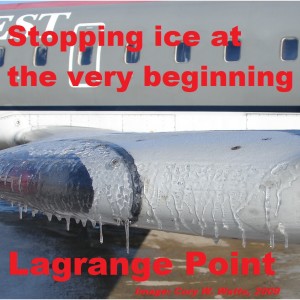
Monday Feb 04, 2019
Monday Feb 04, 2019
Water is essential for life, but if its too cold it can cause havoc on infrastructure. If it's too hot there is not enough to go around. If it's too salty its not good for organic material, and if its saturated with CO2 its even more dangerous. So how do we keep water working for us as our climate changes and we have more droughts, more polar vortexes and more power plants? This week we find out about advances in chemistry and materials science that can help make better use of water.
References:
- Peyman Irajizad, Abdullah Al-Bayati, Bahareh Eslami, Taha Shafquat, Masoumeh Nazari, Parham Jafari, Varun Kashyap, Ali Masoudi, Daniel Araya, Hadi Ghasemi. Stress-Localized Durable Icephobic Surfaces. Materials Horizons, 2019; DOI: 10.1039/C8MH01291A
- Peyman Irajizad, Abdullah Al-Bayati, Bahareh Eslami, Taha Shafquat, Masoumeh Nazari, Parham Jafari, Varun Kashyap, Ali Masoudi, Daniel Araya, Hadi Ghasemi. Stress-Localized Durable Icephobic Surfaces. Materials Horizons, 2019; DOI: 10.1039/C8MH01291A
- Neil Williams et al. CO2 Capture via Crystalline Hydrogen-Bonded Bicarbonate Dimers. Chem, 2019 DOI: 10.1016/j.chempr.2018.12.025
- Image: Cory W Watts, 2009
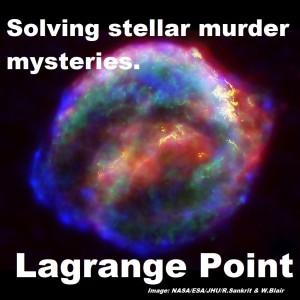
Monday Jan 28, 2019
Monday Jan 28, 2019
What happens when a star dies? We can investigate what is left behind at the scene of the crime to piece together the final moments of a star. Some become white dwarfs so cold and cool they crystallize with thick oxygen and carbon skins. Others collapse in on themselves becoming supernova in a catastrophic core collapse. But sometimes in complex binary systems there is an accomplice that pushes the star over the edge, into supernova territory. Plus super massive black holes can devour passing stars, but sometimes they have a little help.
- Pier-Emmanuel Tremblay, Gilles Fontaine, Nicola Pietro Gentile Fusillo, Bart H. Dunlap, Boris T. Gänsicke, Mark A. Hollands, J. J. Hermes, Thomas R. Marsh, Elena Cukanovaite, Tim Cunningham. Core crystallization and pile-up in the cooling sequence of evolving white dwarfs. Nature, 2019; 565 (7738): 202 DOI: 10.1038/s41586-018-0791-x
- Graham ML et al. Delayed Circumstellar Interaction for Type Ia SN 2015cp Revealed by an HST Ultraviolet Imaging Survey. The Astrophysical Journal, 2019
- Dheeraj R. Pasham, Ronald A. Remillard, P. Chris Fragile, Alessia Franchini, Nicholas C. Stone, Giuseppe Lodato, Jeroen Homan, Deepto Chakrabarty, Frederick K. Baganoff, James F. Steiner, Eric R. Coughlin, Nishanth R. Pasham. A loud quasi-periodic oscillation after a star is disrupted by a massive black hole. Science, Jan. 9, 2019; DOI: 10.1126/science.aar7480

Monday Jan 21, 2019
Monday Jan 21, 2019
A brain injury like a stroke or a neuro degenerative condition like Huntingdon's or Parkinson’s disease can be a long and arduous ordeal. It can be difficult to diagnose and there are no clear treatments, but scientists are working hard to solve it. We find out about the important role Glial cells play in supporting neurons and how things can go wrong if they are disrupted. We also find out about ways to use the abundance of Glial cells to make new neurons. Plus we get a better understanding of cell death and repair and the roll proteins can play in slowing down those processes to give your brain time to recover.
- Mikhail Osipovitch, Andrea Asenjo Martinez, John N. Mariani, Adam Cornwell, Simrat Dhaliwal, Lisa Zou, Devin Chandler-Militello, Su Wang, Xiaojie Li, Sarah-Jehanne Benraiss, Robert Agate, Andrea Lampp, Abdellatif Benraiss, Martha S. Windrem, Steven A. Goldman. Human ESC-Derived Chimeric Mouse Models of Huntington’s Disease Reveal Cell-Intrinsic Defects in Glial Progenitor Cell Differentiation. Cell Stem Cell, 2018; DOI: 10.1016/j.stem.2018.11.010
- Walter and Eliza Hall Institute. (2018, December 20). Parkinson's disease protein buys time for cell repair. ScienceDaily. Retrieved January 5, 2019 from www.sciencedaily.com/releases/2018/12/181220080000.htm
- Penn State. (2018, November 5). New gene therapy reprograms brain glial cells into neurons. ScienceDaily. Retrieved January 5, 2019 from www.sciencedaily.com/releases/2018/11/181105122433.htm

Monday Jan 14, 2019
Episode 309 - Mysterious signals from outside our galaxy!
Monday Jan 14, 2019
Monday Jan 14, 2019
Space is filled with incredibly strange objects, from black holes to neutron stars. In the right conditions these strange stellar objects create incredibly powerful radio bursts which give radio astronomers a treasure trove of data. From the WOW! Signal to Pulsars we recap the history of strange space signals, and we look at the modern hunt for Fast Radio Bursts (FRBs) and how the CHIME observatory in Canada is shedding light on this mystery.
- CHIME FRB Collaboration. Observations of fast radio bursts at frequencies down to 400 megahertz. Nature, 2019 DOI: 10.1038/s41586-018-0867-7
- CHIME FRB Collaboration. A second source of repeating fast radio bursts. Nature, 2019 DOI: 10.1038/s41586-018-0864-x
- Mann, Adam (28 March 2017). "Core Concept: Unraveling the enigma of fast radio bursts". Proc Natl Acad Sci U S A. 114 (13): 3269–3271. Bibcode:2017PNAS..114.3269M. doi:10.1073/pnas.1703512114. PMC 5380068. PMID 28351957.
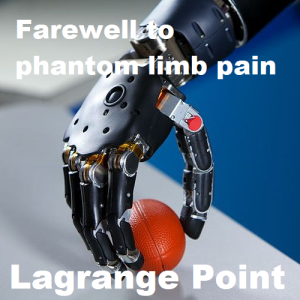
Monday Jan 07, 2019
Episode 308 - Farewell to phantom limb pain, and better prostheses
Monday Jan 07, 2019
Monday Jan 07, 2019
Having a traumatic injury, serious infection or cancer is bad enough let alone if you have to have an amputation. But once that amputation has occurred how do you make life easier for the amputee? Prostheses are helpful, but they can require retraining your brain and lack the sense of touch. Plus phantom limb pain can make life painful and frustrating. This week we find out about surgical and biomedical treatments to help improve prostheses and give amputees better quality of life.
References:
- Bowen, J. B., Ruter, D., Wee, C., West, J., & Valerio, I. L. (2019). Targeted Muscle Reinnervation Technique in Below-Knee Amputation. Plastic and Reconstructive Surgery, 143(1), 309-312. doi:10.1097/prs.0000000000005133
- Cheesborough, J., Smith, L., Kuiken, T., & Dumanian, G. (2015). Targeted Muscle Reinnervation and Advanced Prosthetic Arms. Seminars in Plastic Surgery, 29(01), 062-072. doi:10.1055/s-0035-1544166
- Nathanaël Jarrassé, Etienne de Montalivet, Florian Richer, Caroline Nicol, Amélie Touillet, Noël Martinet, Jean Paysant, Jozina B. de Graaf. Phantom-Mobility-Based Prosthesis Control in Transhumeral Amputees Without Surgical Reinnervation: A Preliminary Study. Frontiers in Bioengineering and Biotechnology, 2018; 6 DOI: 10.3389/fbioe.2018.00164
- Arizona State University. (2018, November 7). New prosthetic hand system allows user to 'feel' again: The Neural-Enabled Prosthetic Hand (NEPH) system marks first time bidirectional prosthesis can be used in home setting. ScienceDaily. Retrieved January 5, 2019 from www.sciencedaily.com/releases/2018/11/181107093757.htm
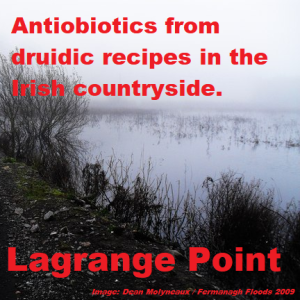
Monday Dec 31, 2018
Episode 307 - Ancient druidic treatments, wasp venom and peptide cages
Monday Dec 31, 2018
Monday Dec 31, 2018
The arms race against antibiotic resistant bacteria continues. As the world faces down this challenge, we turn to stranger and stranger places for treatment. So how can you turn ancient druidic treatments into modern new antibiotics? How do you make wasp venom actually a useful treatment? Can you trap bacteria inside a cage and just starve them to this? This week we find out about the fight back against bacteria.
References:
- Luciana Terra, Paul J. Dyson, Matthew D. Hitchings, Liam Thomas, Alyaa Abdelhameed, Ibrahim M. Banat, Salvatore A. Gazze, Dušica Vujaklija, Paul D. Facey, Lewis W. Francis, Gerry A. Quinn. A Novel Alkaliphilic Streptomyces Inhibits ESKAPE Pathogens. Frontiers in Microbiology, 2018; 9 DOI: 10.3389/fmicb.2018.02458
- Sina Krokowski, Damián Lobato-Márquez, Arnaud Chastanet, Pedro Matos Pereira, Dimitrios Angelis, Dieter Galea, Gerald Larrouy-Maumus, Ricardo Henriques, Elias T. Spiliotis, Rut Carballido-López, Serge Mostowy. Septins Recognize and Entrap Dividing Bacterial Cells for Delivery to Lysosomes. Cell Host & Microbe, 2018; 24 (6): 866 DOI: 10.1016/j.chom.2018.11.005
- Massachusetts Institute of Technology. (2018, December 7). Engineers repurpose wasp venom as an antibiotic drug. ScienceDaily. Retrieved December 29, 2018 from www.sciencedaily.com/releases/2018/12/181207112651.htm
Antibiotics from druidic recipes in the Irish countryside.
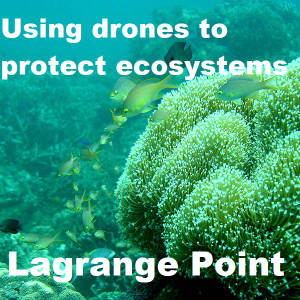
Monday Dec 24, 2018
Episode 306 - Drones as a force for good and evil
Monday Dec 24, 2018
Monday Dec 24, 2018
Drones being used for good, and drones being used for evil. We look at ways that drones can help biologists protect, treat, regrow marine damaged ecosystems. Including IVF transplants for the Great Barrier Reef, sea-grass disease hunting drones and even drones to detect camouflaged birds in forests. We also look into the science behind drone defense and how we can protect our critical infrastructure from rogue drones.
References:
- Hartley, A. (2018, November 27). This attempt to save the reef is the largest, most complicated coral regeneration project ever. Retrieved from https://www.abc.net.au/news/2018-11-27/reef-ivf-unprecedented-new-approach-could-save-dying-coral-reefs/10557718
- Hegranes, J. (2018, January 26). The Past, Present And Future Of Anti-Drone Tech. Retrieved from https://www.forbes.com/sites/forbestechcouncil/2018/01/26/the-past-present-and-future-of-anti-drone-tech/#845428852d62
- Minogue, K. (2018, September 17). Smithsonian Environmental Research Center. Retrieved from https://serc.si.edu/media/press-release/eelgrass-wasting-disease-has-new-enemies-drones-and-artificial-intelligence
- Vincent, J. (2015, December 11). Tokyo police unveil net-wielding interceptor drone. Retrieved from https://www.theverge.com/2015/12/11/9891128/tokyo-interceptor-net-drone
- Shewring, M. (2018, December 13). Drones can detect protected night jar nests (S. Weiss, Ed.). Retrieved from https://www.britishecologicalsociety.org/drones-nightjar-nests/
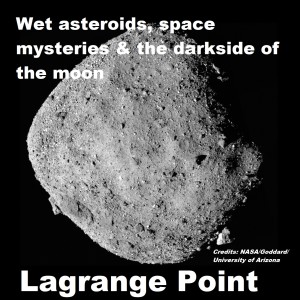
Monday Dec 17, 2018
Episode 305 - Reaching space, the darkside of the moon and wet asteroids
Monday Dec 17, 2018
Monday Dec 17, 2018
It's been a busy week in space news from Virgin Galactic finally reaching space, to wet asteroids and even a mystery in space. We find out about the latest missions to investigate surprisingly damp asteroids by JAXA and NASA. We recap the swirling controversy around a mysterious hole in the Soyuz spacecraft, plus the latest on Chang'e-4's journey to the dark side of the moon.
- Antczak, J. (n.d.). Virgin Galactic tourism rocket ship reaches space in test. Retrieved from https://phys.org/news/2018-12-virgin-galactic-rocket-ship-space.html
- Jones, A. (2018, December 12). Chang'e-4 spacecraft enters lunar orbit ahead of first-ever far side landing. Retrieved from https://spacenews.com/change-4-spacecraft-enters-lunar-orbit-ahead-of-first-ever-far-side-landing/
- Yamaguchi, M. (n.d.). Photos from Japan space rovers show rocky asteroid surface. Retrieved from https://phys.org/news/2018-12-photos-japan-space-rovers-rocky.html
- Materials provided by University of Arizona. Original written by Erin Morton/OSIRIS-REx and Daniel Stolte. Note: Content may be edited for style and length.
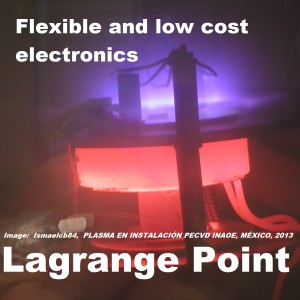
Monday Dec 10, 2018
Episode 304 - Flexible electronics, graphene transfer and paper sensors
Monday Dec 10, 2018
Monday Dec 10, 2018
Flexible electronics and phones sound like science fiction,but materials engineers are turning them into science fact. We find out about projects from across the world to make it a reality. From Australian flexible screens, to MIT's incredibly thin and exotic semiconductors to Purdue's paper based circuits for medical applications.
References:
- Linglong Zhang, Ankur Sharma, Yi Zhu, Yuhan Zhang, Bowen Wang, Miheng Dong, Hieu T. Nguyen, Zhu Wang, Bo Wen, Yujie Cao, Boqing Liu, Xueqian Sun, Jiong Yang, Ziyuan Li, Arara Kar, Yi Shi, Daniel Macdonald, Zongfu Yu, Xinran Wang, Yuerui Lu. Efficient and Layer-Dependent Exciton Pumping across Atomically Thin Organic-Inorganic Type-I Heterostructures. Advanced Materials, 2018; 30 (40): 1803986 DOI: 10.1002/adma.201803986
- Wei Kong, Huashan Li, Kuan Qiao, Yunjo Kim, Kyusang Lee, Yifan Nie, Doyoon Lee, Tom Osadchy, Richard J Molnar, D. Kurt Gaskill, Rachael L. Myers-Ward, Kevin M. Daniels, Yuewei Zhang, Suresh Sundram, Yang Yu, Sang-hoon Bae, Siddharth Rajan, Yang Shao-Horn, Kyeongjae Cho, Abdallah Ougazzaden, Jeffrey C. Grossman, Jeehwan Kim. Polarity governs atomic interaction through two-dimensional materials. Nature Materials, 2018; DOI: 10.1038/s41563-018-0176-4
- Behnam Sadri, Debkalpa Goswami, Marina Sala de Medeiros, Aniket Pal, Beatriz Castro, Shihuan Kuang, Ramses V. Martinez. Wearable and Implantable Epidermal Paper-Based Electronics. ACS Applied Materials & Interfaces, 2018; 10 (37): 31061 DOI: 10.1021/acsami.8b11020
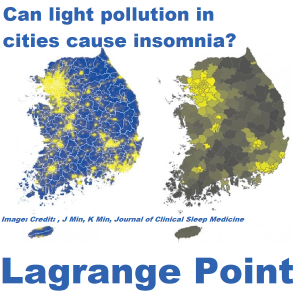
Monday Dec 03, 2018
Monday Dec 03, 2018
Life in the big city can be fully of late nights, lots of lights and risky behaviour. This week we look at what living in the big city may mean for your health. Whether it be the impact of light pollution and getting a good night's rest, to the trade-offs of being a night owl, our circadian rhythms can be impacted by living a 24/7 life. We find out about studies on big data about a cities health, from a long term study of insomniacs in South Korea to using social media to determine when a city is 'feeling lucky' and willing to take a risk.
References:
- Jin-young Min, Kyoung-bok Min. Outdoor Artificial Nighttime Light and Use of Hypnotic Medications in Older Adults: A Population-Based Cohort Study. Journal of Clinical Sleep Medicine, 2018; 14 (11): 1903 DOI: 10.5664/jcsm.7490
- Suzana Almoosawi Snieguole Vingeliene Frederic Gachon Trudy Voortman Luigi Palla Jonathan D Johnston Rob Martinus Van Dam Christian Darimont Leonidas G Karagounis. Chronotype: Implications for Epidemiologic Studies on Chrono-Nutrition and Cardiometabolic Health. Advances in Nutrition, 2018 DOI: 10.1093/advances/nmy070
- A. Ross Otto, Johannes C. Eichstaedt. Real-world unexpected outcomes predict city-level mood states and risk-taking behavior. PLOS ONE, 2018; 13 (11): e0206923 DOI: 10.1371/journal.pone.0206923
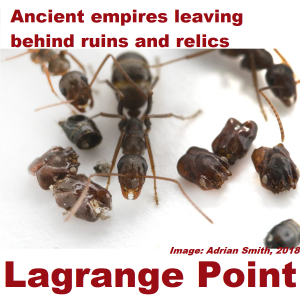
Monday Nov 26, 2018
Monday Nov 26, 2018
This week we find out about ancient empires which have changed the face of the planet, changed the climate and left behind trophies of their conquests. From pyramid building termites in Brazil, to large climate changing colonies in Spain and even David vs Goliath battles in Florida with trophies of the dead.
- Stephen J. Martin, Roy R. Funch, Paul R. Hanson, Eun-Hye Yoo. A vast 4,000-year-old spatial pattern of termite mounds. Current Biology, 2018; 28 (22): R1292 DOI: 10.1016/j.cub.2018.09.061
- David Martín-Perea, Omid Fesharaki, M. Soledad Domingo, Sara Gamboa, Manuel Hernández Fernández. Messor barbarus ants as soil bioturbators: Implications for granulometry, mineralogical composition and fossil remains extraction in Somosaguas site (Madrid basin, Spain). CATENA, 2019; 172: 664 DOI: 10.1016/j.catena.2018.09.018
- Adrian A. Smith. Prey specialization and chemical mimicry between Formica archboldi and Odontomachus ants. Insectes Sociaux, 2018; DOI: 10.1007/s00040-018-0675-y
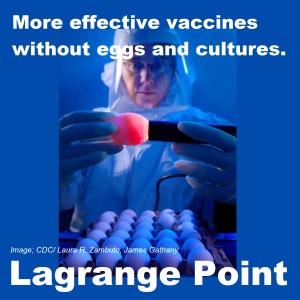
Monday Nov 19, 2018
Episode 301 - More effective Vaccines.
Monday Nov 19, 2018
Monday Nov 19, 2018
Using vaccines to tackle a pandemic is a serious challenge for health agencies. So how do we make vaccines more effective? Can we remove the requirement for a cold chain from lab to clinic? We also find out ways to boost the performance of a flu shot with a simple cream. Plus an update on a new vaccine types to prevent Ebola.
References:
- Jing Zou, Xuping Xie, Huanle Luo, Chao Shan, Antonio E. Muruato, Scott C. Weaver, Tian Wang, Pei-Yong Shi. A single-dose plasmid-launched live-attenuated Zika vaccine induces protective immunity. EBioMedicine, 2018; DOI: 10.1016/j.ebiom.2018.08.056
- Ami Patel et al. Protective Efficacy and Long-Term Immunogenicity in Cynomolgus Macaques by Ebola Virus Glycoprotein Synthetic DNA Vaccines. Journal of Infectious Diseases, 2018 DOI: 10.1093/infdis/jiy537
- NIH/National Institute of Allergy and Infectious Diseases. (2018, September 6). Clinical trial testing topical cream plus influenza vaccine in progress: Cream regimen could boost immunity. ScienceDaily. Retrieved October 13, 2018 from www.sciencedaily.com/releases/2018/09/180906101347.htm
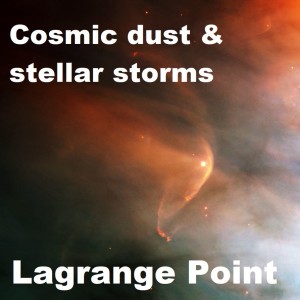
Monday Nov 12, 2018
Episode 300 - Once in a blue asteroid, hidden objects in the Lagrange Point
Monday Nov 12, 2018
Monday Nov 12, 2018
In our 300th episode we return to our roots, the Lagrange Point. We find out about some odd objects hanging out at Earth's Lagrange Point, and how satellites can survive fierce solar storms only to be undone by a stiff breeze. Plus something rarer than a blue moon, a blue asteroid!
- Judit Slíz-Balogh, András Barta, Gábor Horváth. Celestial mechanics and polarization optics of the Kordylewski dust cloud in the Earth–Moon Lagrange point L5 – Part II. Imaging polarimetric observation: new evidence for the existence of Kordylewski dust cloud. Monthly Notices of the Royal Astronomical Society, 2019; 482 (1): 762 DOI: 10.1093/mnras/sty2630
- Richard B. Horne, Mark W. Phillips, Sarah A. Glauert, Nigel P. Meredith, Alex D. P. Hands, Keith A. Ryden, Wen Li. Realistic Worst Case for a Severe Space Weather Event Driven by a Fast Solar Wind Stream. Space Weather, 2018; DOI: 10.1029/2018SW001948
- University of Arizona. (2018, October 29). Rare blue asteroid reveals itself during fly-by. ScienceDaily. Retrieved November 9, 2018 from www.sciencedaily.com/releases/2018/10/181029152849.htm
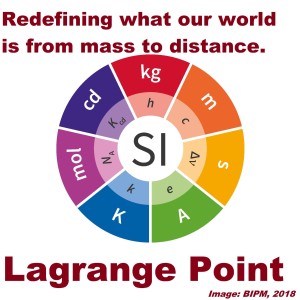
Monday Nov 05, 2018
Episode 299 - Redefining the kilogram a history of measurement
Monday Nov 05, 2018
Monday Nov 05, 2018
Have you ever stopped to wonder what ruler rules them all? How we set the standard for height, for weight, for everything around us? What if you weighed one thing one day, and travelled to another country and suddenly gained 5 kgs or had to use an entirely different weight system? What if you weighed one thing this week and more the next? This week we find out the history measurement systems, how we've standardised them and come up with unique and repeatable measures that don't rely on artefacts (real and metaphorically).
References:
- Suplee, C., Lauren Lee, J., Gillespie, A., Porter, G., Stein, B., & Phillips, B. et al. (2018). A Turning Point for Humanity: Redefining the World’s Measurement System. Retrieved from https://www.nist.gov/si-redefinition/turning-point-humanity-redefining-worlds-measurement-system
- Jabbour, Z., & Yaniv, S. (2001). The kilogram and measurements of mass and force. Journal of Research of the National Institute of Standards and Technology, 106(1), 25. doi:10.6028/jres.106.003
- Newell, D. B. (2014). A more fundamental International System of Units. Physics Today, 67(7), 35-41. doi:10.1063/pt.3.2448
- Bureau International des Poids et Mesures. (n.d.). On the future revision of the SI. Retrieved from https://www.bipm.org/en/measurement-units/rev-si/

